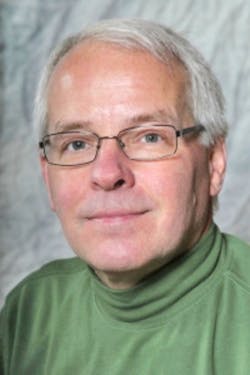Researcher adds details on electric-vehicle capacitive charging
Earlier this month I reported on a presentation titled “WPT: from mW/cm2 Harvesting to kW Capacitive Vehicle Powering,” delivered at APEC in San Antonio by Zoya Popovic, Distinguished Professor and Lockheed Martin Endowed Chair, Electrical, Computer, and Energy Engineering at the University of Colorado, Boulder. Since APEC, a researcher at the university has elaborated on the latter part of her talk on kilowatt capacitive vehicle powering.
“We’d like to enable electric vehicles to charge on the go,” said Khurram Afridi, an assistant professor in CU Boulder’s Department of Electrical, Computer and Energy Engineering. The goal is to employ capacitive coupling to power an electric vehicle from metal plates embedded in a road while maintaining safety requirements.
“On a highway, you could have one lane dedicated to charging,” Afridi said, adding that a vehicle could simply travel in that lane when it needed an energy boost and could carry a smaller onboard battery as a result, reducing the overall cost of the vehicle.
In the lab, Afridi and his team employed megahertz-scape frequencies to deliver power between metal plates separated by 12 cm. “When we broke the 1,000-W barrier by sending energy across the 12-cm gap, we were just exhilarated,” Afridi said. “There were a lot of high fives that day.”
Afridi has received funds from the Department of Energy’s ARPA-E division and support from a National Science Foundation CAREER award. A recent seed grant from the Colorado Energy Research Collaboratory, granted to Afridi in partnership with Colorado State University and NREL, will allow him to explore the feasibility and optimization of the in-motion system.
In the near term, Afridi envisions the technology being adapted for warehouse use. Automated warehouse robots and forklifts, for example, could move along areas enabled for wireless power transfer and never need to be plugged in, eliminating downtime and increasing productivity. The technology could also be adapted for use in next-generation transportation projects like the Hyperloop.
“As a scientist, you feel challenged by things that people tell you are impossible to do,” Afridi said.
Afridi elaborates on the research and presents a demonstration in a video posted at Newswise.
About the Author

Rick Nelson
Contributing Editor
Rick is currently Contributing Technical Editor. He was Executive Editor for EE in 2011-2018. Previously he served on several publications, including EDN and Vision Systems Design, and has received awards for signed editorials from the American Society of Business Publication Editors. He began as a design engineer at General Electric and Litton Industries and earned a BSEE degree from Penn State.
